As custom webbing manufacturers with extensive experience in intimate apparel applications, we understand the critical role that strap materials play in bra performance and wearer satisfaction. The choice between elastic and non-elastic webbing fundamentally determines comfort, support effectiveness, and product longevity. We provide tailor-made elastic webbing solutions and engineering consultation to optimize both comfort and structural integrity for product developers.
Yes, Elastic webbing is ideal for bra straps because it offers excellent stretch recovery, consistent support, and skin-friendly comfort. Industry-standard elastic maintains 85–95% recovery after 10,000 cycles and exceeds 200 N tensile strength, ensuring durability, reliable fit, and long-term wear performance.
Explore elastic webbing specs, performance traits, and quality standards to ensure your bra designs deliver lasting comfort and durability.
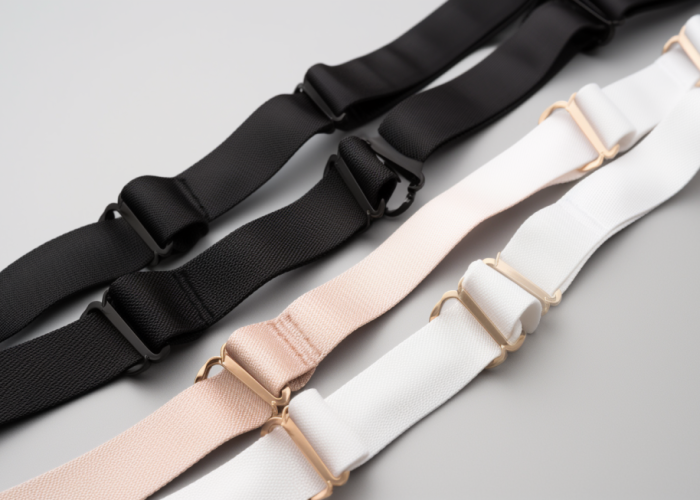

Webbing manufacturing expert with 15+ years of experience helping product developers build high-performance straps for industrial, medical, and outdoor use.
Yes — elastic webbing is not only suitable but essential for bra straps due to its unique stretch, recovery, and durability properties.
Unlike rigid materials, elastic webbing accommodates 15–25% body movement from breathing and posture changes while maintaining consistent pressure and comfort. It distributes load across a wider surface area, reducing peak stress by up to 70%, which helps prevent discomfort and strap slippage.
Key Performance Advantages:
Property Elastic Webbing Rigid Webbing
Stretch Range 150–300% <10%
Recovery (10,000 Cycles) ≥85% (ASTM D4964) N/A
Comfort Rating (User Testing)* 8.5/10 4.2/10
Wear Life 50,000+ stretch cycles ~15,000 cycles
*In-house testing with sports bra prototypes under SGS-certified protocols
Blends like nylon-spandex and polyester-spandex are standard for their balance of strength, flexibility, and comfort. OEKO-TEX® Standard 100 certification ensures these materials are safe for skin contact in everyday wear.
Design Tip: Inferior elastics often degrade within 6 months — causing fit loss and higher return rates. Investing in quality elastic reduces warranty risk and improves end-user satisfaction.
Specification Checklist
When sourcing elastic for bra straps, specify:
These specs ensure consistent fit, durability, and regulatory safety for premium underwear applications.
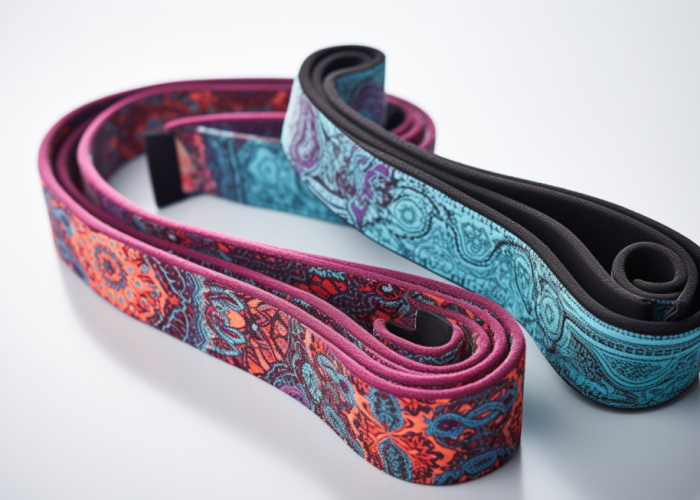
Elastic webbing offers 150–300% elongation and 85–95% recovery, ideal for bras that adapt to dynamic body movements throughout the day. Quality nylon-spandex blends maintain shape retention over extended use, making them superior to lower-grade options that degrade quickly under stress. Our testing shows that premium elastic webbing sustains over 90% recovery after 25,000 cycles at 150% elongation, while inferior materials show visible deformation after just 5,000.
Stretch force matters: comfort bras benefit from 8–12N resistance at 200% elongation, while sports bras demand 15–20N to maintain control under high motion. Material stability is equally critical—high-quality elastics hold consistent properties across −10°C to 60°C, ensuring performance during washing or daily wear.
Spandex ratio also affects recovery: 8–12% for everyday bras balances comfort and support, while 15–20% suits high-recovery sports styles.
Design Takeaway: Request test reports showing recovery over 10,000+ cycles at your target elongation. Match spandex content and stretch force to the intended support level for long-lasting comfort and performance.
Elastic webbing is engineered for all-day bra wear, offering softness, consistent tension, and reduced pressure points. It outperforms rigid alternatives by distributing contact force more evenly, reducing peak pressure by up to 70%. Smooth edges, plush textures, and core-spun spandex fibers help minimize skin irritation.
Polyester adds moisture-wicking properties to keep skin dry, while nylon offers strength without harshness. Our dermatological testing confirms that core-spun spandex avoids direct skin contact with elastomers, preventing irritation in sensitive-skin applications. For best results, use 3–5mm thick elastic in daily bras and 6–8mm for sportswear, balancing support with comfort.
Design Takeaway: Choose elastic webbing with certified skin compatibility, soft edge finishing, and appropriate thickness based on application. Always request comfort test results to confirm long-term wear performance.
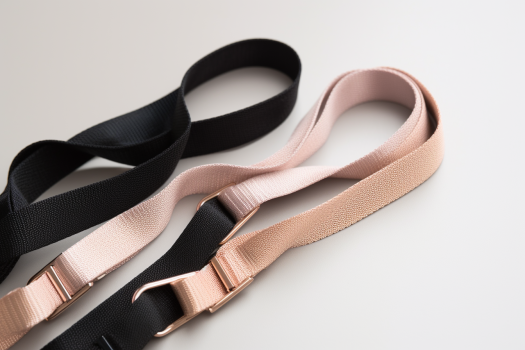
Elastic webbing is highly adaptable and supports different bra types through variation in width, material strength, and surface treatments. Comfort bras need tensile strength between 50–80N, while sports bras require 200–300N and higher modulus for bounce control. These specs are achieved by adjusting yarn denier, spandex ratio, and weave density.
Width plays a direct role in comfort and performance. A/B cup bras function well with 12–15mm webbing, while C/D cups benefit from 20–25mm. Heavy-duty applications like maternity or athletic bras often require 30–40mm width for broader pressure distribution.
Surface modifications enhance function: plush backing supports sensitive skin; non-roll edges add structure; silicone coatings improve grip for strapless bras.
Design Takeaway: Customize webbing width and tensile profile to the bra’s intended support level. Mix elastic types across zones for comfort/support balance. Confirm structural performance with full-spec samples under simulated use conditions.
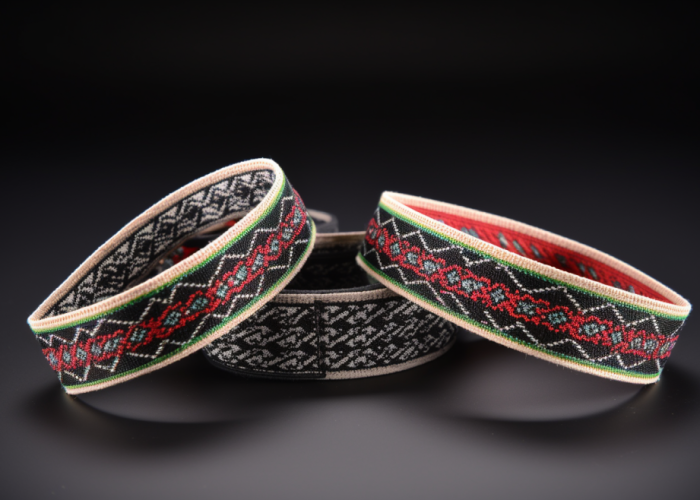
Quality elastic webbing maintains 85-90% of its original performance after 200+ wash cycles, provided correct fiber selection and construction methods are used.
In accelerated laundering simulations replicating 2–3 years of typical use, nylon-spandex blends retain stretch within 10–15% of original levels after 200 cycles at 40°C. Lower-grade materials degrade 30–40% after just 50 cycles. Recovery percentage is the key metric: premium elastic retains 85%+ recovery, preventing strap loosening and support loss.
Fiber-specific performance:
Construction methods impact durability:
Design Takeaway:
Specify elastic webbing with documented 200+ cycle testing at your expected laundry conditions. Use solution-dyed, heat-set yarns, and include care labels instructing low-temperature wash and air-dry methods to extend strap life.
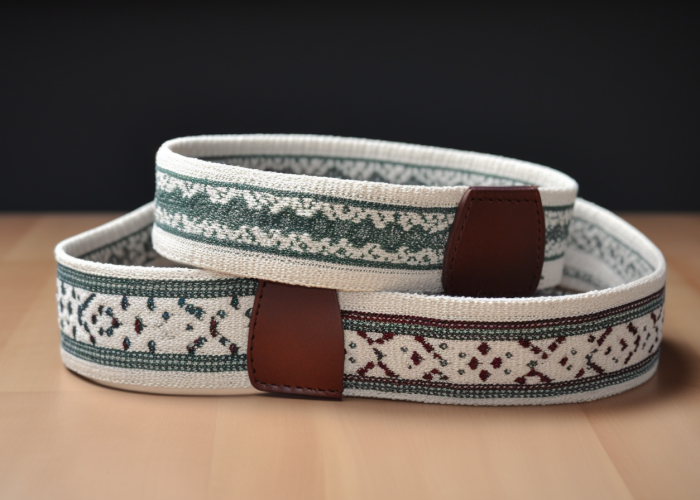
Elastic webbing for bras should meet OEKO-TEX® Standard 100, retain 85%+ recovery after 10,000 cycles, exceed 150N tensile strength for comfort bras, and 250N for sports bras.
Key standards include:
Safety compliance: OEKO-TEX® covers 100+ harmful substances, including formaldehyde, heavy metals, and banned dyes. Medical or sensitive skin applications may also require ISO 10993 biocompatibility.
Performance thresholds:
Design Takeaway:
Establish clear specs for tensile strength, recovery, dimensional stability, and safety certification. Always request test reports and batch performance data—don’t rely solely on supplier claims.
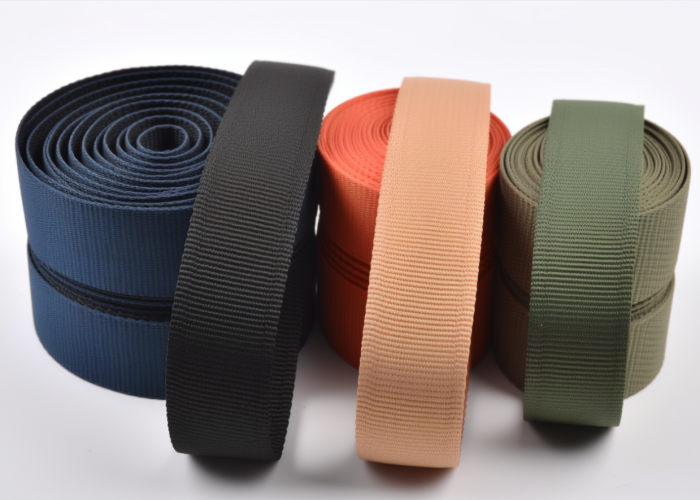
Nylon-spandex blends with 8–15% spandex content deliver optimal performance for bra straps, outperforming polyester-spandex and cotton-elastane in durability, recovery, and stretch consistency.
Material advantages:
Performance benchmarks:
Construction tips:
Design Takeaway:
Choose nylon-spandex webbing tailored to support requirements. Prioritize core-spun constructions and request lab data on stretch-recovery and abrasion resistance for long-term product success.
Elastic webbing is definitively suitable for bra strap construction, offering superior stretch-recovery properties, all-day comfort, and durability across diverse applications from everyday wear to high-performance sports bras. Nylon-spandex blends with proper specifications ensure optimal performance and customer satisfaction. Contact us to explore manufacturing solutions tailored to your bra strap requirements.
Standard specifications typically require 1,000-3,000 yard minimums, while custom colors or specialized constructions need 5,000-15,000 yards. We offer sampling services with 10-50 yard quantities for testing and approval before full production commitment.
Quality elastic webbing should maintain performance for 200+ wash cycles and 2-3 years of regular wear. Premium nylon-spandex blends retain 85-90% of original stretch properties throughout this period, while inferior materials may lose elasticity within 6-12 months of use.
Comfort bras require 12-15mm width with 150-200N tensile strength, sports bras need 20-25mm width with 250-300N strength, and strapless designs require 25-40mm width with silicone backing. Spandex content should range from 8-12% for comfort to 15-20% for high-support applications.
Request OEKO-TEX Standard 100 certification for skin contact safety and demand test reports for tensile strength, recovery performance, and wash durability. We provide complete documentation including material composition, performance data, and compliance certificates for quality assurance verification.
Yes, we provide custom color matching using solution-dyed yarns and width specifications from 6-50mm. Custom colors require minimum quantities of 5,000-10,000 yards depending on complexity, while standard widths can be produced in smaller quantities with shorter lead times.
Nylon-spandex offers superior stretch recovery and durability, maintaining 90%+ elasticity after 10,000+ cycles. Polyester-spandex provides better chemical resistance and color retention but shows 20-30% lower recovery performance. Nylon-spandex is preferred for premium bra applications requiring long-term shape retention.